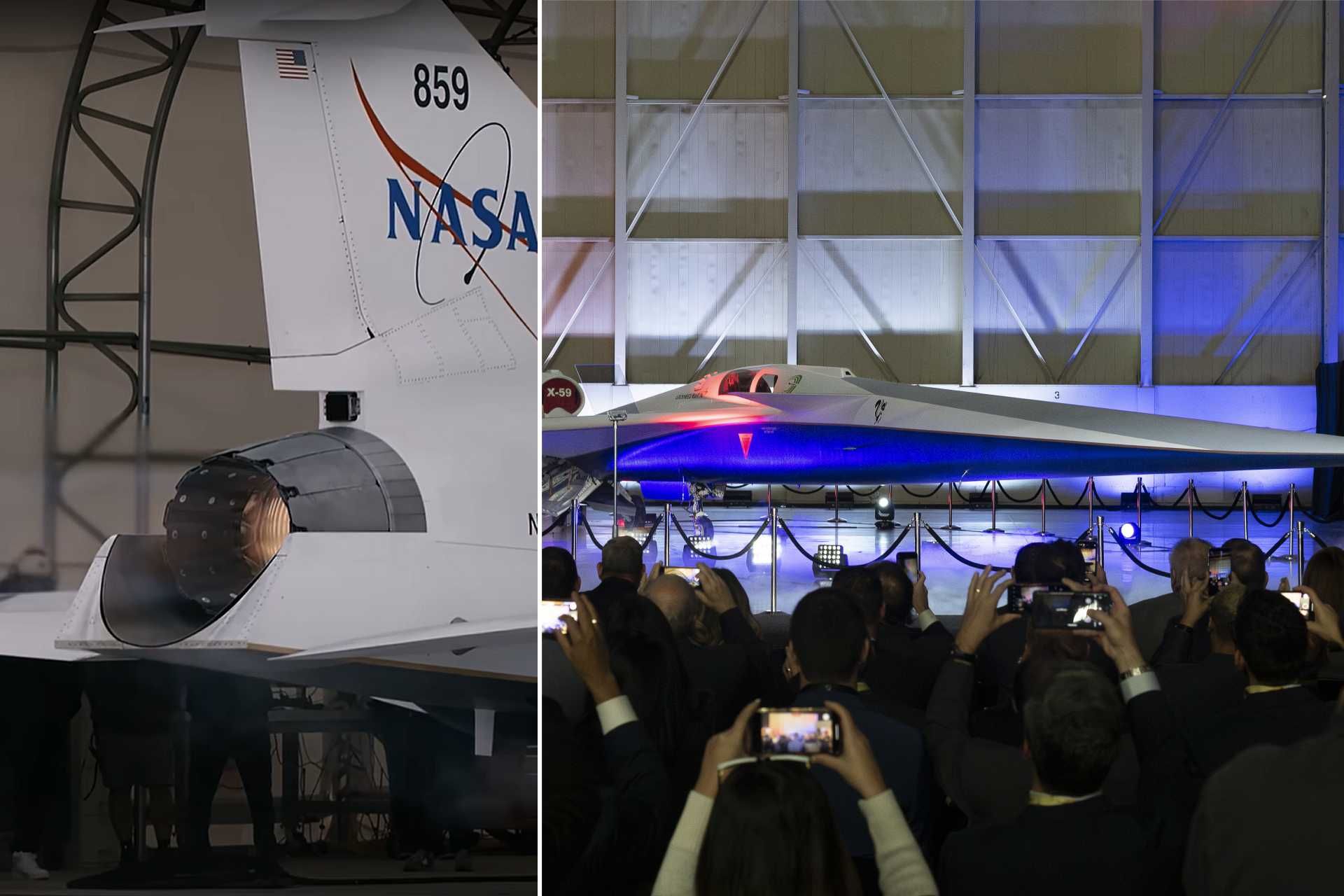Breaking News
Exclusive: US Lockheed Martin's X-59 Achieves Key Afterburner Test Milestone in Quiet Supersonic Aviation Revolution.
According to a video published by Lockheed Martin on December 29, 2024, the company's groundbreaking X-59 aircraft has successfully conducted afterburner tests, marking a significant milestone in the quest for quiet supersonic aviation. These tests demonstrate the X-59's capability to operate at supersonic speeds while maintaining a relatively low sonic boom, a key goal of the Quiet Supersonic Technology (QueSST) program. Lockheed Martin, in collaboration with NASA, is developing the X-59 as part of an effort to break through the barriers that currently prevent commercial supersonic flight over land due to noise concerns.
Follow Army Recognition on Google News at this link

The Lockheed Martin X-59 aircraft undergoes afterburner testing, marking a pivotal moment in its development as part of the Quiet Supersonic Technology (QueSST) program. (Picture source Lockheed Martin)
The afterburner test phase is a crucial component of the X-59's broader performance evaluation, as it assesses the aircraft's ability to accelerate to supersonic speeds with minimal environmental impact. The afterburner itself is a key technology used in supersonic and hypersonic aircraft, adding fuel to the exhaust stream after combustion to generate additional thrust, often resulting in higher speeds. The X-59’s design, however, incorporates advanced modifications to its afterburner system aimed at minimizing the loud sonic boom typically associated with supersonic flight.
This test is a critical step toward Lockheed Martin’s and NASA’s goal of achieving a breakthrough in supersonic travel that could lead to a future where commercial airlines are capable of flying faster than the speed of sound without producing the disruptive sonic booms that have historically been a deterrent for passengers and communities on the ground. The X-59, as part of the QueSST program, has been designed with a sleek, long fuselage and a unique tail configuration that allow it to cut through the air more efficiently, reducing shockwaves that normally result in the loud "boom" heard when conventional supersonic aircraft break the sound barrier.
As part of the ongoing testing process, the X-59 has been undergoing a series of engine runs, structural tests, and evaluations of its aerodynamics and acoustic emissions. The aircraft's design features, including its elongated nose and specialized engine nacelles, are specifically optimized to reduce the intensity of the sonic boom to a mere "sonic thump" that would be barely noticeable to people on the ground. Lockheed Martin’s video provides a glimpse into the rigorous testing process that has been conducted, including capturing the afterburner ignition and the aircraft’s ability to maintain supersonic speeds while producing significantly lower noise levels.
The successful completion of the afterburner tests is seen as a major leap forward for the X-59 program, bringing the aircraft closer to its next phase of testing, which will involve flight tests at NASA's Armstrong Flight Research Center. There, engineers and researchers will conduct supersonic flight tests over a series of designated test sites, collecting data on the aircraft's acoustic emissions and evaluating the community’s reaction to the reduced sonic boom. If these tests prove successful, the X-59 could pave the way for commercial supersonic flights over land in the near future.
The development of the X-59 is particularly timely as the global aviation industry has been exploring ways to reduce travel times and improve efficiency in air travel, with supersonic transport offering the potential for significantly faster journeys. The aircraft’s success could ultimately lead to a new generation of supersonic jets capable of operating within the confines of modern noise regulations, potentially revolutionizing air travel.
Lockheed Martin has expressed its commitment to continuing the testing phase in close collaboration with NASA, with the ultimate goal of certifying the X-59 for commercial use. Should the project succeed, it could open the door for future supersonic transport aircraft that are quieter, more efficient, and capable of dramatically shortening flight times on long-haul routes.
Beyond its commercial prospects, the X-59's innovative design and advanced technologies also hold significant potential for military applications. The aircraft's ability to fly at supersonic speeds while minimizing the sonic boom could be a game-changer for military operations, especially in reconnaissance, strike missions, and rapid response scenarios. Traditional supersonic military aircraft, such as the Concorde-based supersonic bombers or fighter jets, generate substantial noise when breaking the sound barrier, often alerting adversaries to their presence. The X-59's reduced sonic signature would enable military forces to conduct high-speed operations without the usual warning signs, offering enhanced stealth and surprise. Furthermore, its ability to maintain supersonic speeds over long distances without compromising operational efficiency could make it an ideal platform for rapid strategic deployment, long-range reconnaissance, or even covert strikes. These capabilities, combined with its potential to reduce flight time across vast areas, could transform modern military operations, providing forces with a significant edge in both conventional and asymmetric warfare environments.
This latest development highlights the increasing strides being made in the field of supersonic aviation, as aerospace companies work toward creating faster, quieter, and more sustainable aircraft to meet the demands of a rapidly evolving aviation market. With the afterburner tests now completed, the X-59 is one step closer to changing the way the world travels by air, while also expanding its potential for military operations on a global scale.


























